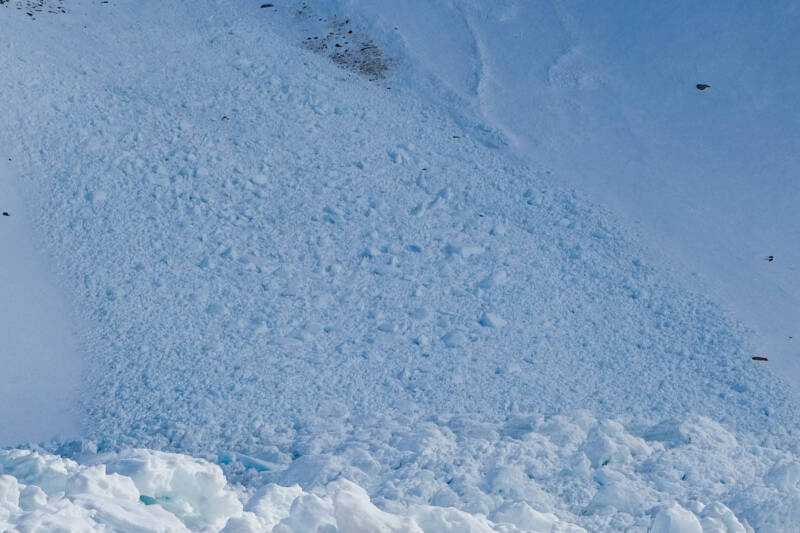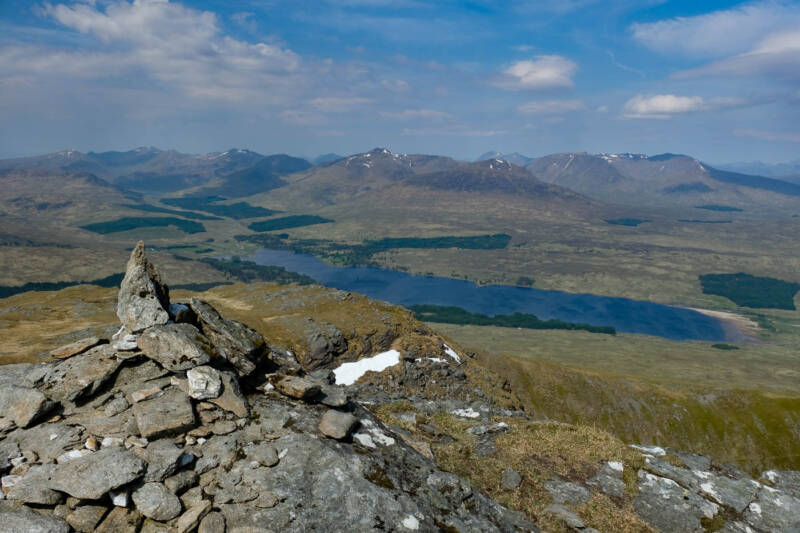We’re working with Scottish Mountain Rescue to bring you some of the human stories behind the rescue headlines, hopefully giving more insight into what and how things can go wrong in the mountains and the people who volunteer to help. Here Niall tells of his experience after falling through a cornice in poor visibility on Beinn an Dothaidh.
Tell us a little bit more about yourself?
I am a tour guide based in Edinburgh and a keen hill wallker. I am currently building up my experience on the hills with a view to taking the Mountain Leader course in the future. At the time of my accident this had been my 75th Munro and completed over 100 hill walking days, so had felt confident in my skill level on the day.
What were the circumstances that led up to the rescue?
On December 16th 2019, my friend Mike and I were aiming to complete two Munros at Bridge of Orchy (Beinn Dorain and Beinn an Dothaidh). When we got to the low point between the two hills we decided that there would only be enough time for one, so we decided to continue up Beinn an Dothaidh. As we neared the summit, the conditions began to worsen quickly with the visibility dropping to whiteout conditions. Checking the map I could see that we were very close to the summit. We decided to give ourselves 5 minutes to reach the summit, if not we would turn back. However after a couple of minutes we reached the cairn marking the top. With the weather conditions we decided it wasn’t wise to hang around and began to make our way back.

All of sudden I had the feeling of weightlessness occasionally sliding on my back while surrounded by snow. It felt like being in a washing machine filled with snow. This lasted what felt around 20-30 seconds before coming to rest under the snow. We later found out from the rescuers that we had stepped through a cornice and had fallen around 1000 feet down the face of Beinn an Dothaidh. After pulling myself out from the snow I was able to call Mike to make sure he was OK, as we had been separated in the fall. It wasn’t until we were picked up that I heard from him again. I then phoned the Mountain Rescue as I was unsure of Mike’s location or if there was further danger from avalanche where we’d landed. After the call, I knew we would have to stay put as my phone had run out of battery and SMR knew our location.
When you realised it was an emergency and you might need help, how did you feel?
Initially I was feeling guilty and angry at myself for this situation happening. The last thing I wanted was for other people to risk themselves for me. However I knew that this was the best option to ensure the safety of Mike and I. After that I tried to be calm as possible when making the call. The battery on my phone had dropped due to the cold, so I wanted to make sure I got our info over as quickly and clearly as possible.

How did you call for help/ involve the mountain rescue?
I phoned for help by dialling 999 and asking for SMR, I then received a text to get my location via GPS.
How did mountain rescue help? What actions did they take and how did you feel throughout the rescue?
Initially this was via a call to assure that they knew our location and that teams were converging on Bridge of Orchy. This gave me some relief to know that help was now on its way. However, I hadn’t heard from Mike for several hours and you do begin to think the worst.

The mountain rescue responded by sending 3 teams (Oban, Arrochar and Glencoe). This was led by a 3 man team who came to walk Mike and I down from the hill until it was safe to bring a quad bike up to collect us. The team arrived at me first – I felt a massive wave of relief at seeing the team and knowing that the we were now safe. Thankfully they were then able to quickly find Mike and escorted us both down the hill, meeting up with other members of the SMR team. I couldn’t speak highly enough of the professionalism of the teams that were involved. I do remember being surprised at how calm and reassuring they were during the rescue.
What was the outcome of the rescue?
Mike and I were both successfully escorted off the hill with only minor injuries. I had been taken to Belford Hospital in Fort William for a check up and found out I had broken my collar bone. We were both a bit bumped and bruised but thankfully nothing major.
What difference did this make to you?
Knowing that we had managed to escape from the accident with relatively minor injuries was a huge relief. We also had a new found respect for the work the SMR teams do. I had obviously been aware of what they did, but never thought I would see it first hand, let alone be involved in a rescue.
How did you feel about the support that you received from mountain rescue?
The guys who were involved in the rescue were brilliant. I found them to be very reassuring and understanding of what had happened. Advising us that in no way should this put us off returning to the hills but using the experience to learn from. We both couldn’t be more grateful for their help and support that day, without them I don’t know if we’d both be here to tell the story.

How did the rescue impact on your life?
I think we’ve both tried to focus on what positives we can take, rather than focusing on what negatives could have happened. Whether that be promoting winter safety by sharing our experience or fundraising for SMR. Mike has recently entered an ultra triathlon in Estonia to raise funds for SMR, while I have plans for my own fundraising. For me personally it has definitely changed my perspective on life. Particularly in that our accident could easily have had much more serious consequences than it did.
Scottish Mountain Rescue has 850 volunteers and 25 Mountain Rescue Teams, but they couldn’t do what they do without support from people like you. The teams are all volunteers, but need funding to support the running of Scottish Mountain Rescue, so that we can help the teams offer the best possible rescue service to all who need them, and provide the teams with their training, insurance and equipment they need.

